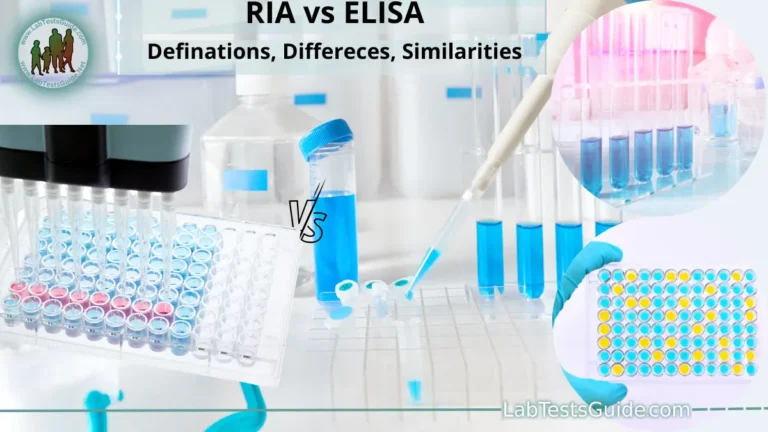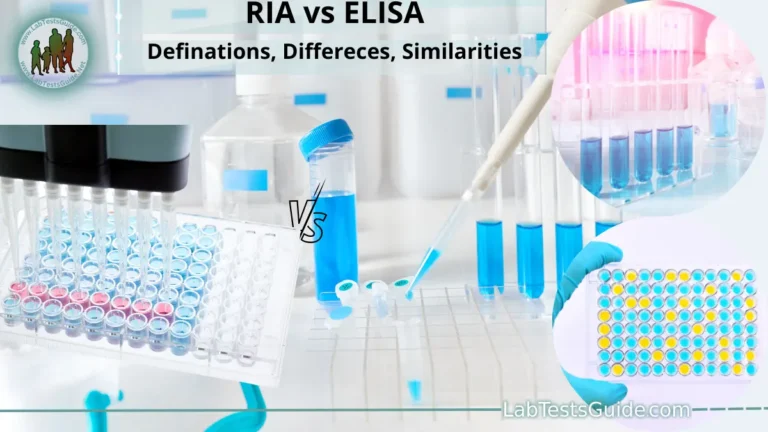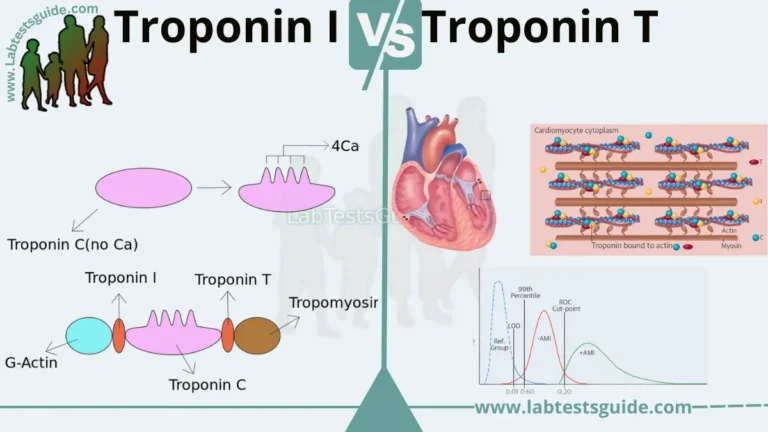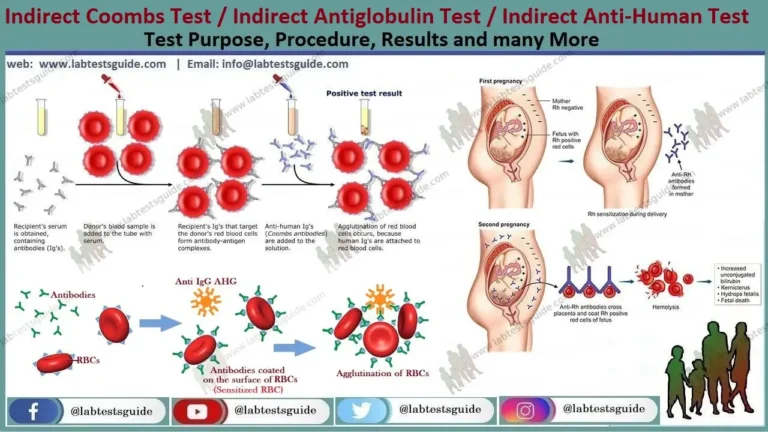Agglutination vs Precipitation: Agglutination and precipitation are both processes that result in the formation of visible clumps, but they differ in the nature of the particles involved. Agglutination refers to the clumping of cells or particles in a suspension due to the binding of specific antibodies to antigens on the surface of the cells or particles. Precipitation, on the other hand, involves the formation of insoluble complexes between soluble antigens and antibodies, leading to the precipitation of these complexes out of solution.

Agglutination:
Definition of Agglutination:
Agglutination is the process in which particles, such as cells or bacteria, clump together into visible aggregates due to the binding of specific antibodies to their surface antigens.
Mechanism of Agglutination:
Here are the steps involved in the mechanism of agglutination:
- Presence of target antigens: The particles, such as cells or bacteria, must have surface antigens that can be recognized by specific antibodies.
- Binding of antibodies: Antibodies bind specifically to their target antigens on the surface of the particles, forming a bridge between two or more particles.
- Cross-linking of particles: The bridging of the particles by the antibodies results in the cross-linking of the particles, causing them to come together and form visible aggregates or clumps.
- Formation of stable aggregates: The resulting clumps are stabilized by the presence of multiple antigens on the surface of the particles, allowing for the binding of multiple antibodies and the formation of stable aggregates.
- Observation or measurement: The resulting clumps can be observed visually or measured using various techniques, such as turbidimetry or nephelometry, to diagnose infections or identify specific antigens or antibodies in samples.
Types of Agglutination:
Here are the different types of agglutination:
- Direct Agglutination: In this type of agglutination, the antigen is directly attached to the surface of the particle, such as bacteria or red blood cells, and the antibodies bind to the antigen, resulting in visible clumping.
- Indirect Agglutination: In this type of agglutination, the antigen is attached to a carrier particle, such as latex beads, and the antibodies bind to the antigen on the carrier particle, resulting in visible clumping.
- Reverse Agglutination: In this type of agglutination, the antibodies are attached to the surface of the particle, such as latex beads, and the antigens bind to the antibodies, resulting in visible clumping.
- Passive Agglutination: In this type of agglutination, the antigen is attached to a non-biological particle, such as latex beads or erythrocyte ghosts, and the antibodies bind to the antigen, resulting in visible clumping.
- Hemagglutination: In this type of agglutination, the target particles are red blood cells, and the antibodies bind to the surface antigens on the red blood cells, resulting in visible clumping.
- Agglutination Inhibition: In this type of agglutination, the antibodies and antigens are mixed together, and if they bind to each other, they will form clumps. However, if the sample contains a substance that blocks the binding of the antibodies and antigens, then no clumps will form. This technique is used in various diagnostic tests, such as for detecting viruses or detecting the presence of drugs in the body.
Applications of Agglutination:
Agglutination has several applications in various fields, including:
- Blood typing: Agglutination is used to determine an individual’s blood type by mixing blood samples with specific antibodies that recognize and bind to antigens on the surface of red blood cells.
- Bacterial identification: Agglutination is used to identify different types of bacteria based on their surface antigens. Antibodies specific to the bacterial antigens are used to agglutinate the bacteria and allow for their identification.
- Serological testing: Agglutination is used in serological testing to detect the presence of specific antigens or antibodies in biological samples. The clumping of particles can indicate the presence or absence of the target antigen or antibody.
- Immunohistochemistry: Agglutination is used in immunohistochemistry to detect the presence of specific antigens in tissue samples. Specific antibodies are used to agglutinate the target antigen in the tissue and make it visible for analysis.
- Diagnosis of infectious diseases: Agglutination is used to diagnose infectious diseases caused by bacteria or viruses. Antibodies specific to the pathogen are used to agglutinate the pathogen in the patient’s sample, allowing for the detection and diagnosis of the infection.
- Quality control in manufacturing: Agglutination is used in quality control during the production of vaccines, blood products, and other biological products. Agglutination tests are used to ensure the quality and consistency of the final product.
Advantages and disadvantages of Agglutination:
Here is a table outlining the advantages and disadvantages of agglutination:
| Advantages | Disadvantages |
|---|---|
| 1. High specificity: Agglutination tests are highly specific and can detect even small amounts of target antigen or antibody in a sample. | 1. Limited quantification: Agglutination tests are qualitative and do not provide precise quantitative measurements of the target antigen or antibody. |
| 2. Rapid results: Agglutination tests can provide results quickly, often within minutes, making them useful in situations where a rapid diagnosis is required. | 2. Limited multiplexing: Agglutination tests are typically limited to detecting a single target antigen or antibody at a time and are not suitable for multiplexing. |
| 3. Easy to use: Agglutination tests are relatively simple and easy to perform, making them accessible to non-specialized laboratory personnel. | 3. Limited sensitivity: Agglutination tests may not be sensitive enough to detect low levels of target antigen or antibody in a sample. |
| 4. Cost-effective: Agglutination tests are generally inexpensive and do not require specialized equipment or reagents. | 4. Interference: Agglutination tests can be affected by various factors, such as sample matrix, interfering substances, or cross-reactivity, which may lead to false-positive or false-negative results. |
| 5. Wide range of applications: Agglutination tests can be used in various fields, including clinical diagnostics, food safety, and environmental monitoring. | 5. Limited automation: Agglutination tests require manual handling and interpretation, which can be time-consuming and prone to human error. |
Precipitation:
Definition of Precipitation:
Precipitation is the process of forming insoluble complexes or aggregates of antigens and antibodies that become visible as a cloudy or solid precipitate in a liquid solution.
Mechanism of Precipitation:
The mechanism of precipitation involves the following steps:
- Formation of antigen-antibody complexes: Antigens and antibodies present in a liquid solution react and form complexes due to their complementary structures.
- Aggregation of complexes: The antigen-antibody complexes aggregate and form larger clusters due to the interaction of multiple antibodies with a single antigen or multiple antigens with a single antibody.
- Formation of visible precipitate: The aggregated complexes become insoluble and form a visible precipitate that settles at the bottom of the solution or floats on the surface.
- Precipitation reaction endpoint determination: The point at which the precipitation reaction reaches its endpoint is determined by observing the formation of the visible precipitate or by measuring the turbidity of the solution using a spectrophotometer.
Types of Precipitation:
There are several types of precipitation reactions, including:
- Single diffusion or Ouchterlony technique: In this technique, antigen and antibody are placed in separate wells in an agar plate, and diffusion occurs over time, leading to the formation of a visible precipitin line at the point where the antigen and antibody meet.
- Double diffusion or Mancini technique: In this technique, both antigen and antibody are placed in separate wells in an agar plate. As they diffuse, they form a visible line of precipitation where they meet, and the width of the line can be used to determine the concentration of antigen or antibody.
- Radial immunodiffusion (RID): In this technique, antigen and antibody diffuse from separate wells in an agar plate, and a circular zone of precipitation forms around the antigen well. The diameter of the circle is proportional to the concentration of the antigen.
- Immunoelectrophoresis: In this technique, proteins are separated by electrophoresis, and then an antibody is added to the gel. As the antibody diffuses, it reacts with the proteins, forming visible precipitin bands.
- Immunofixation electrophoresis: This technique combines electrophoresis with immunodiffusion to identify and quantify specific immunoglobulin (Ig) classes and subclasses in serum or urine samples.
- Counterimmunoelectrophoresis: In this technique, antigen and antibody are added to an agar plate, and an electric current is applied to the gel. The antigen and antibody diffuse and form a visible precipitin line.
Applications of Precipitation:
The precipitation reaction has several applications in various fields, including:
- Immunology: Precipitation reactions are widely used in immunology to detect and quantify antigens and antibodies in clinical and research settings. These reactions are commonly used to diagnose infectious diseases, autoimmune disorders, and allergies.
- Forensic science: Precipitation reactions can be used in forensic science to identify human fluids such as semen, saliva, and bloodstains, by detecting specific proteins or enzymes in these fluids.
- Food industry: Precipitation reactions are used in the food industry to detect and quantify the presence of allergens, such as gluten, in food products. This helps to ensure the safety of food products for people with food allergies.
- Environmental monitoring: Precipitation reactions can be used in environmental monitoring to detect and quantify pollutants, such as heavy metals, in water or soil samples.
- Biochemistry: Precipitation reactions are used in biochemistry to isolate and purify specific proteins from complex mixtures, by forming a visible precipitate of the protein of interest.
Advantages and disadvantages of Precipitation:
| Advantages | Disadvantages |
|---|---|
| Simple and inexpensive | Limited sensitivity compared to other immunoassays |
| Applicable to a wide range of antigens and antibodies | May produce false positives due to non-specific binding |
| Can detect both IgG and IgM antibodies | Can be affected by interfering substances in the sample |
| No specialized equipment or expertise required | Requires a relatively large amount of sample |
| Can be used in qualitative or quantitative assays | Not suitable for high-throughput assays |
It should be noted that the advantages and disadvantages of precipitation reactions may vary depending on the specific type of precipitation reaction and the application for which it is used.
Reactions:
| Agglutination | Precipitation |
|---|---|
| Antigen and antibody react to form visible clumps | Antigen and antibody react to form visible precipitate |
| The reaction occurs in a liquid phase | The reaction occurs in a liquid or gel phase |
| Detects surface antigens on cells or particles | Detects soluble antigens or antibodies in a liquid phase |
| Can be used to detect and identify bacterial and viral pathogens, blood typing, and other diagnostic tests | Can be used to detect and quantify antigens and antibodies in clinical, forensic, environmental, and food industry settings |
| Examples include Widal test, hemagglutination, and latex agglutination | Examples include single diffusion or Ouchterlony technique, double diffusion or Mancini technique, and radial immunodiffusion |
| Advantages include high specificity and sensitivity, rapid results, and ease of use | Advantages include simplicity, low cost, and wide applicability to a variety of antigens and antibodies |
| Disadvantages include the need for visual interpretation, variability in results due to operator subjectivity, and interference from non-specific binding | Disadvantages include limited sensitivity compared to other immunoassays, potential for false positives due to non-specific binding, and interference from interfering substances in the sample |
It should be noted that there may be some overlap between the applications of agglutination and precipitation reactions, and the specific advantages and disadvantages may vary depending on the type of reaction and the application for which it is used.
Differences between Agglutination and Precipitation:
- Reaction type: Agglutination is a reaction in which antigen and antibody react to form visible clumps, while precipitation is a reaction in which antigen and antibody react to form visible precipitate.
- Reaction phase: The reaction in agglutination occurs in a liquid phase, whereas the reaction in precipitation can occur in a liquid or gel phase.
- Target antigen: Agglutination detects surface antigens on cells or particles, while precipitation detects soluble antigens or antibodies in a liquid phase.
- Application: Agglutination can be used to detect and identify bacterial and viral pathogens, blood typing, and other diagnostic tests, while precipitation can be used to detect and quantify antigens and antibodies in clinical, forensic, environmental, and food industry settings.
- Examples: Examples of agglutination include the Widal test, hemagglutination, and latex agglutination, while examples of precipitation include single diffusion or Ouchterlony technique, double diffusion or Mancini technique, and radial immunodiffusion.
- Sensitivity: Agglutination has high sensitivity, while precipitation has limited sensitivity compared to other immunoassays.
- Specificity: Agglutination has high specificity, while precipitation may produce false positives due to non-specific binding.
- Interference: Agglutination can be affected by interfering substances in the sample, while precipitation can also be affected by interfering substances in the sample.
- Sample amount: Agglutination requires a relatively small amount of sample, while precipitation requires a relatively large amount of sample.
- Equipment and expertise: Agglutination does not require specialized equipment or expertise, while precipitation may require specialized equipment or expertise.
- Visual interpretation: Agglutination requires visual interpretation, which can lead to variability in results due to operator subjectivity, while precipitation may also require visual interpretation, but is less prone to variability.
- False positives: Agglutination is less likely to produce false positives than precipitation.
- Non-specific binding: Agglutination may produce non-specific binding, while precipitation is more prone to non-specific binding.
- Time: Agglutination produces rapid results, while precipitation may take longer to produce results.
- Cost: Agglutination is generally more expensive than precipitation.
Table of Differences:
| Agglutination | Precipitation | |
|---|---|---|
| Reaction type | Forms visible clumps | Forms visible precipitate |
| Reaction phase | Liquid phase | Liquid or gel phase |
| Target antigen | Surface antigens on cells or particles | Soluble antigens or antibodies in liquid phase |
| Application | Bacterial and viral pathogen detection, blood typing, diagnostic tests | Antigen and antibody detection and quantification in clinical, forensic, environmental, and food industry settings |
| Examples | Widal test, hemagglutination, latex agglutination | Single diffusion or Ouchterlony technique, double diffusion or Mancini technique, radial immunodiffusion |
| Sensitivity | High | Limited compared to other immunoassays |
| Specificity | High | May produce false positives due to non-specific binding |
| Interference | Can be affected by interfering substances in sample | Can also be affected by interfering substances in sample |
| Sample amount | Requires relatively small amount of sample | Requires relatively large amount of sample |
| Equipment and expertise | Does not require specialized equipment or expertise | May require specialized equipment or expertise |
| Visual interpretation | Requires visual interpretation, which can lead to variability in results due to operator subjectivity | May also require visual interpretation, but is less prone to variability |
| False positives | Less likely to produce false positives | More prone to non-specific binding |
| Time | Produces rapid results | May take longer to produce results |
| Cost | Generally more expensive | Generally less expensive |
Similarities between Agglutination and Precipitation:
- Both agglutination and precipitation are based on the interaction between antigens and antibodies.
- Both methods are widely used in clinical, forensic, environmental, and food industry settings.
- Both methods are commonly used for the detection and quantification of antigens or antibodies in biological samples.
- Both methods can be used to identify pathogens, such as bacteria and viruses.
- Both methods require a specific antigen-antibody reaction to occur for the detection to be successful.
- Both methods can be performed in liquid or gel phase.
- Both methods can be affected by interfering substances in the sample.
- Both methods can be quantitative or qualitative, depending on the purpose of the assay.
- Both methods can be used in combination with other diagnostic tests to improve accuracy.
- Both methods require careful interpretation of the results, as false positives and false negatives can occur.
- Both methods can be adapted for use in point-of-care testing, although this may require some modifications to the assay.
- Both methods can be used to assess the efficacy of vaccines or other immunotherapies.
Table of Similarities:
| Agglutination | Precipitation | |
|---|---|---|
| Based on | Antigen-antibody interaction | Antigen-antibody interaction |
| Application | Clinical, forensic, environmental, and food industry settings | Clinical, forensic, environmental, and food industry settings |
| Purpose | Detection and quantification of antigens or antibodies | Detection and quantification of antigens or antibodies |
| Pathogen detection | Used to identify pathogens such as bacteria and viruses | Used to identify pathogens such as bacteria and viruses |
| Specificity | Require a specific antigen-antibody reaction for detection | Require a specific antigen-antibody reaction for detection |
| Phase | Can be performed in liquid or gel phase | Can be performed in liquid or gel phase |
| Interference | Can be affected by interfering substances in the sample | Can be affected by interfering substances in the sample |
| Quantification | Can be quantitative or qualitative | Can be quantitative or qualitative |
| Combination | Can be used in combination with other diagnostic tests | Can be used in combination with other diagnostic tests |
| Interpretation | Requires careful interpretation of results | Requires careful interpretation of results |
| Point-of-care testing | Can be adapted for use in point-of-care testing | Can be adapted for use in point-of-care testing |
| Efficacy assessment | Can be used to assess the efficacy of vaccines or immunotherapies | Can be used to assess the efficacy of vaccines or immunotherapies |
Factors that affect Agglutination and Precipitation tests:
There are several factors that can affect the performance of agglutination and precipitation tests. Some of these factors include:
- Antigen concentration: The amount of antigen in the sample can affect the sensitivity of the test. A low antigen concentration may result in false-negative results.
- Antibody concentration: The amount of antibody used in the test can affect the sensitivity of the test. A low antibody concentration may result in false-negative results.
- Incubation time and temperature: The length of time and temperature at which the sample and reagents are incubated can affect the kinetics of the reaction. This can affect the sensitivity and specificity of the test.
- pH: The pH of the sample and reagents can affect the stability and solubility of the antigens and antibodies. Changes in pH can result in false-positive or false-negative results.
- Interfering substances: Interfering substances in the sample, such as drugs, proteins, and lipids, can affect the specificity and sensitivity of the test.
- Cross-reactivity: Cross-reactivity can occur when an antibody binds to an antigen that is similar but not identical to the target antigen. This can result in false-positive results.
- Contamination: Contamination of the sample or reagents can affect the accuracy and reliability of the test.
- Instrumentation: The type and quality of the instrumentation used for the test can affect the sensitivity and specificity of the test.
It is important to control these factors during the performance of agglutination and precipitation tests to ensure accurate and reliable results.
FAQs:
What is the difference between agglutination and precipitation tests?
Agglutination tests detect the clumping of particles, such as cells or latex beads, while precipitation tests detect the formation of a visible insoluble complex between antigens and antibodies.
What are the applications of agglutination and precipitation tests?
These tests are used in clinical, forensic, environmental, and food industry settings for the detection and quantification of antigens or antibodies.
What is the mechanism of agglutination?
Agglutination is based on the interaction between antigens and antibodies, which leads to the formation of visible clumps or aggregates.
What is the mechanism of precipitation?
Precipitation is based on the interaction between antigens and antibodies, which leads to the formation of an insoluble complex that precipitates out of solution.
How are agglutination and precipitation tests performed?
These tests are performed by mixing the sample containing the antigen with a specific antibody or vice versa and observing the results.
What are the factors that can affect the performance of agglutination and precipitation tests?
Factors that can affect these tests include antigen and antibody concentration, incubation time and temperature, pH, interfering substances, cross-reactivity, contamination, and instrumentation.
Are agglutination and precipitation tests quantitative or qualitative?
These tests can be either quantitative or qualitative, depending on the type of test and the purpose of the test.
Can agglutination and precipitation tests be used in combination with other diagnostic tests?
Yes, these tests can be used in combination with other diagnostic tests, such as enzyme-linked immunosorbent assay (ELISA) or polymerase chain reaction (PCR), to improve sensitivity and specificity.
How are agglutination and precipitation tests interpreted?
The results of these tests need to be carefully interpreted, as false-positive or false-negative results can occur.
Can agglutination and precipitation tests be adapted for point-of-care testing?
Yes, these tests can be adapted for use in point-of-care testing, which allows for rapid and easy diagnosis of diseases in remote or resource-limited settings.
Can agglutination and precipitation tests be used to assess the efficacy of vaccines or immunotherapies?
Yes, these tests can be used to assess the efficacy of vaccines or immunotherapies by detecting the presence or absence of specific antigens or antibodies.
Conclusion:
In conclusion, agglutination and precipitation are two important immunoassay techniques used for the detection and quantification of antigens or antibodies. While they share some similarities, they differ in their mechanism, visual output, and applications. Factors such as antigen and antibody concentration, incubation time and temperature, pH, interfering substances, cross-reactivity, contamination, and instrumentation can affect the performance of these tests. Both agglutination and precipitation tests can be adapted for point-of-care testing and used to assess the efficacy of vaccines or immunotherapies. It is important to carefully interpret the results of these tests to avoid false-positive or false-negative results.
Home | Blog | About Us | Contact Us | Disclaimer
Possible References Used







